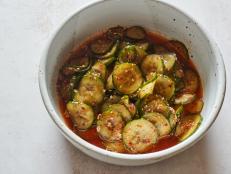Food As Medicine: Why Doctors Are Writing Prescriptions for Produce

That’s the idea behind a variety of programs popping up in medical clinics and farmers markets across the country. One of the largest is the Fruit and Vegetable Prescription Program (FVRx) run by Wholesome Wave, a nonprofit focused on connecting low-income people with local produce. Since its inception in 2010, FVRx has launched 18 programs in several states, helping thousands of families get access to affordable fresh fruits and vegetables. It was the brainchild of Chef Michel Nischan, who wanted to find a way to measure the health effects of improving people’s diets. “We wanted to treat this like a real prescription system: The patient sees the doctor, gets a diagnosis and a prescription, then has to return to the doctor regularly for monitoring and to get refills,” explains Nischan. Program doctors give out prescriptions equal to $1 per day for each patient and his or her family members (meaning a family of four would get $28 per week) that can be redeemed at participating farmers markets and other retailers. Patients are able to purchase fresh fruits and vegetables they might not otherwise be able to afford, which helps improve the whole family’s diet. “We’ve seen a significant number of patients who decreased their BMI during the course of the program,” says Nischan.
Not surprisingly, prescription produce programs are a hit with both health care providers and patients; there are doctors across the country using their prescription pads to not only encourage patients to improve their diets, but give them an easy way to do so. One example is Garth Davis, a bariatric surgeon in Houston who partnered with Rawfully Organic, a Houston-based nonprofit food co-op. Every Wednesday, Davis runs a “Farmacy Stand” in the lobby of his medical center, where patients are handed a box of organic fruits and vegetables to fill their produce prescriptions.
“I’m thrilled that the idea is catching on and that more people are getting affordable access to produce,” says Nischan. “After all, food is much cheaper than medicine.”
Sally Wadyka is a Boulder, Colorado-based journalist who writes about nutrition, health and wellness.

































